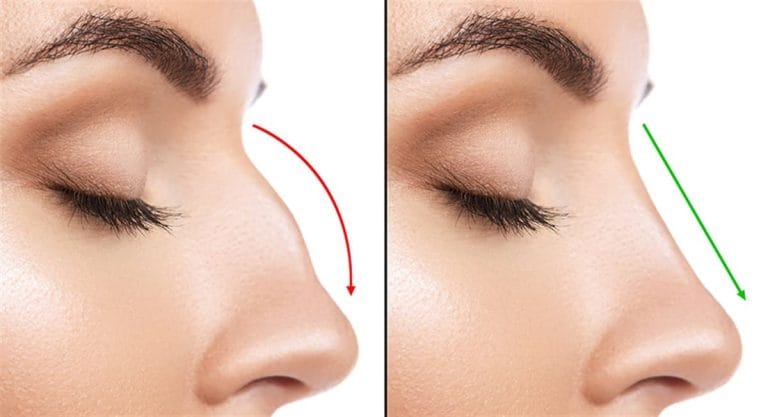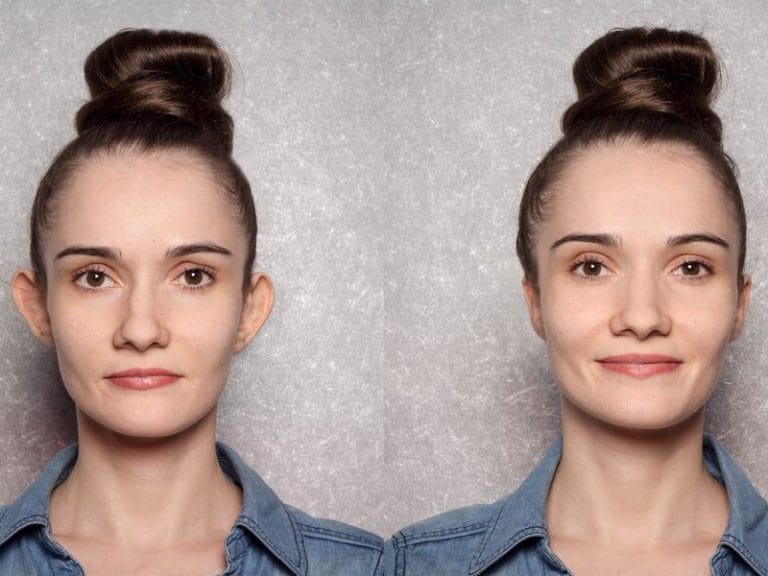Facelift surgery offers an effective solution against the signs of aging that occur on our skin over time. In this article, we will answer the questions of what is facelift surgery and why it is preferred, and also provide detailed information about facelift techniques and methods. The postoperative process is also very important; therefore, we should also consider the recovery process and possible difficulties after facelift surgery. Thus, we can make our aesthetic choices more consciously. Let’s discover the secrets of youthful appearance together!

What is Face Lift Surgery and Why is it Preferred?
Facelift is a surgical aesthetic procedure applied to reduce the signs of skin aging and achieve a younger appearance. Over time, our skin loses its elasticity, facial features become prominent and sagging occurs. At this point, facelift surgery comes into play. So, why is this procedure so preferred?
Firstly, many people desire a youthful and dynamic appearance. Facelift not only corrects age-related changes, but also helps to increase one’s self-confidence. Indeed, many women and men prefer this method for a younger appearance. Below, we summarise some important points about why facelift surgery is so popular and for which reasons it is preferred:
| Causes | Description |
|---|---|
| Young look | Defines facial contours, reduces wrinkles. |
| Confidence growth | Improvement in appearance increases self-esteem. |
| Lasting results | When applied with the right techniques, it gives effective results for a long time. |
| Loss of flexibility | It restores skin elasticity lost with ageing. |
| Emotional fulfilment | Looking younger can improve the overall quality of life. |
The techniques of the surgery differ depending on the age, skin structure and the desired result. Some people prefer this procedure only on the lower part of the face, while others may want to apply it to the whole face. The recovery process after facelift surgery also varies depending on the general health status of the person, age and the technique applied.
In summary, facelift procedure provides both physical and emotional benefits. However, a good preparation and a detailed consultation with a specialist physician are essential before considering this procedure. Since the expectations of each individual are different, it is important to express these expectations clearly with the surgeon.
Face Lift Surgery Techniques and Methods
Facelift surgery is performed to reduce the signs of aging that occur over time. Facelift techniques and methods used in this process differ according to the needs and facial structure of each individual. In this article, we will take a detailed look at the main techniques used in facelift surgery and their advantages.
Basic Face Lift Techniques
| Technical Name | Description | Advantages |
|---|---|---|
| Classic Face Lift | It is performed by removing excess skin on the face and stretching the tissues underneath. | It offers long-lasting results. |
| Mini Face Lift | It is a less invasive approach and is performed through small incisions. | It provides less recovery time and natural appearance. |
| Endoscopic Face Lift | It is a technique applied with less visible incisions using small cameras. | Provides healing with minimal scarring. |
| Liquid Filling and Fat Injection | Fillers or fat cells of the person are used to eliminate the loss of volume in the face. | It allows you to get instant results. |
When choosing between these techniques, factors such as facial shape, age, skin quality and personal preferences should be taken into account. For example, if the skin sagging is significant, classical or mini facelift techniques may be more suitable, while options such as liquid filling and fat injection may be preferred for people with less sagging problems.
Recovery Process After Facelift Surgery
After facelift procedures, patients usually undergo a certain recovery period. This process may vary depending on the techniques used. However, in general, the recovery process after facelift surgery consists of the following steps:
- First Days: Swelling and bruising are normal. Applying ice can help alleviate this condition.
- First Week: Mild pain may be felt. Painkillers recommended by the doctor can be used.
- Second Week: Stitches are removed and patients can usually return to social life. However, excessive physical activity should be avoided.
- Third Week and After: As the swelling gradually decreases, the results become evident. It may take several months for the final results to be fully available.
Conditions such as difficulty breathing after facelift surgery that you are likely to experience may be felt differently in each patient. Therefore, it is of great importance to establish an open dialogue with our doctors before the operation.
Although it is possible to rejuvenate with facelift techniques, there are also some points to be considered. The important thing is to prioritise our health throughout the process, regardless of which method we prefer, and to work with experienced teams.
Recovery Process After Facelift Surgery
The healing process after facelift surgery is critical for the success of the surgery and the quality of the results. Although this process varies from person to person, it proceeds in line with certain stages and recommendations. Firstly, let’s examine the symptoms that occur after the operation and the points we should pay attention to in order to better understand the healing process.
First 24 Hours: First Steps
The first 24 hours after surgery is one of the most important periods in the healing process. During this time, we need to pay attention to the following recommendations:
- Rest: It is essential that we get plenty of rest to help our body’s healing process.
- Medication: Taking painkillers recommended by your doctor at regular intervals will reduce possible discomfort.
- Bandages: It is important to change the bandages applied to reduce facial oedema and accelerate the healing process in accordance with the doctor’s recommendation.
First Weeks We Must Be Careful
After the first week, there may be some situations that we often encounter. For example, symptoms such as difficulty breathing after facelift surgery can be seen in some patients for a short period of time. However, this condition is usually temporary and improves over time.
- Swelling and bruising: We observe that the swelling and bruises that occur on our face with the effect of the surgery begin to decrease over time. It will be useful to apply a cold compress in this process.
- Controls: It is necessary not to disrupt our postoperative control appointments. Our doctor will evaluate our healing process and intervene if there are any problems.
Long Term Protecting Our Health
Let’s list a few important points that we should pay attention to in order for the postoperative healing process to continue in a healthy way in the long term:
| Things to Consider | Description |
|---|---|
| Sun Protection | Avoiding exposure to sunlight will support the healthy healing of wounds on our face. |
| Healthy Eating | Consuming foods rich in vitamins and minerals will speed up the healing process. |
| Sport and Exercise | After the doctor’s approval, doing light exercises will be beneficial for our general health. |
In the light of this information, the recovery process after facelift surgery will be faster and smoother when the right steps are taken. By adopting an understanding attitude and following the instructions of our doctor, we will take the necessary steps for a youthful appearance, which is our goal. Let’s not forget that patience is one of the most important elements in this process.
Difficulties that may be encountered after facelift surgery
Although facelift operation is an important method that responds to aesthetic concerns, it is possible to encounter certain difficulties afterwards. We believe that it will be useful to know some of the problems in advance in order to make this process healthier and more comfortable. At this point, we will provide information under several important headings to detail the possible difficulties we may experience after facelift surgery.
Physical ailments in the healing process
After the operation, there may be mild or moderate discomfort. These generally include:
| Discomfort | Description |
|---|---|
| Swelling | Swelling at the operation site is common. It usually subsides within a few weeks. |
| Bruising | Bruising may occur on the face, which is part of the healing process. |
| Agri | Mild pain is normal and can be controlled with painkillers prescribed by the doctor. |
Breathing Difficulty
In the periods after facelift surgery, it has been observed that some people have difficulty breathing after facelift surgery. This is usually related to postoperative swelling and healing of the tissues. In this process, attention should be paid to the nose and mouth area, and in case of any difficulty, a doctor should be consulted.
Risk of Infection
As with any surgical procedure, there is also a risk of infection after facelift applications. It is therefore vital that hygiene rules are strictly observed during the recovery period. Otherwise, infection may develop at the surgical site and adversely affect the healing process.
“Regular medical check-ups during the recovery process are an important step to minimise difficulties.”
Communication Problems
Intense swelling and bruising can cause temporary changes in facial expression. This can have a negative effect on mood and make human relationships difficult. It is quite a natural process to experience times when we have difficulty expressing ourselves. Therefore, moral support and patience can help us to get through this period more easily.
In the light of this information, we can spend the process more consciously by knowing the difficulties we may encounter after facelift surgery. With good planning and attention, it is possible to overcome these challenges.
q
While facelift surgery is an effective way to reduce the signs of aging and achieve a more youthful appearance, it is not the only option we fully favour. There are different methods according to our aesthetic needs. In this article, let’s take a look at other methods that can be preferred for a youthful appearance.
1. Filling Applications
Filling applications are a frequently preferred method to compensate for the loss of volume in our face and to reduce the appearance of fine lines. Generally, hyaluronic acid-based fillers are used in the cheek, lip and under-eye area, providing a fuller and younger appearance. The application effects are visible immediately and usually persist for several months.
2. Botox
Botox is a method that reduces the appearance of lines and wrinkles by temporarily weakening the muscles. It is especially effective in removing dynamic wrinkles on the forehead, between the eyebrows and around the eyes. Visible results can be seen shortly after application, but the effect lasts for 3-6 months.
3. Chemical Peeling
Chemical peeling is the process of peeling the top layer of the skin with a special solution. In this way, the skin looks smoother and brighter. It creates a youthful appearance by creating positive effects on problems such as blemishes, wrinkles and acne scars on the skin.
4. Laser Applications
Laser treatments are used in many areas such as skin renewal, tightening and spot removal. Laser skin resurfacing supports elasticity and youthful appearance by increasing collagen production in the lower layers of the skin.
5. Micro Needling
Micro-needling is a method that accelerates the self-renewal process of the skin by opening micro-wounds with tiny needles in the upper layer of the skin. This method improves the appearance of the skin, reduces wrinkles and increases elasticity.
| Aesthetic Options | Objective | Persistence Status |
|---|---|---|
| Filling Applications | Volumising | 6-12 months |
| Botox | Reducing wrinkles | 3-6 months |
| Chemical Peel | Skin tone equalisation | 1-3 months (session dependent) |
| Laser Applications | Skin resurfacing | 1-3 years (session dependent) |
| Micro Needling | Skin renewal and tightening | 1-2 years |
As a result, there are many options to achieve a younger appearance after facelift surgery. Each method has its own advantages and disadvantages. Deciding which method is most suitable for you in consultation with a specialist physician will increase your satisfaction with the result. Let’s not forget that aesthetic choices vary according to personal preferences and we should always find the best option.





